
The Brooklyn Bridge adorns New York City’s epic skyline and stands as an iconic symbol for the Big Apple. But how many interesting facts about the Brooklyn Bridge do you know?
Seems like most visitors know to walk across the bridge during their first visit, but few take the time to learn about the history of this famous bridge. We won’t let that happen to you, let’s cover some interesting Brooklyn Bridge facts!
A (Short) History of the Brooklyn Bridge
The Problem: The idea for the Brooklyn Bridge was quite simple. Before it was built in 1869, the only way to cross from Manhattan to Brooklyn (which were two separate cities at the time) was via ferry across the East River.
The majority of folks crossing the river were working class folks that had to brace miserable winter conditions to get to work.
The Solution: Well, an engineer wanted to change that by proposing to build a bridge between the two cities (if successful, it’d be the longest suspension bridge ever built in the world).
The Logistics: The engineer had the skills to design and build the bridge, but lacked the funding. So, he enlisted the help and an infamous, corrupt and effective politician. Let’s go over the key players in detail.
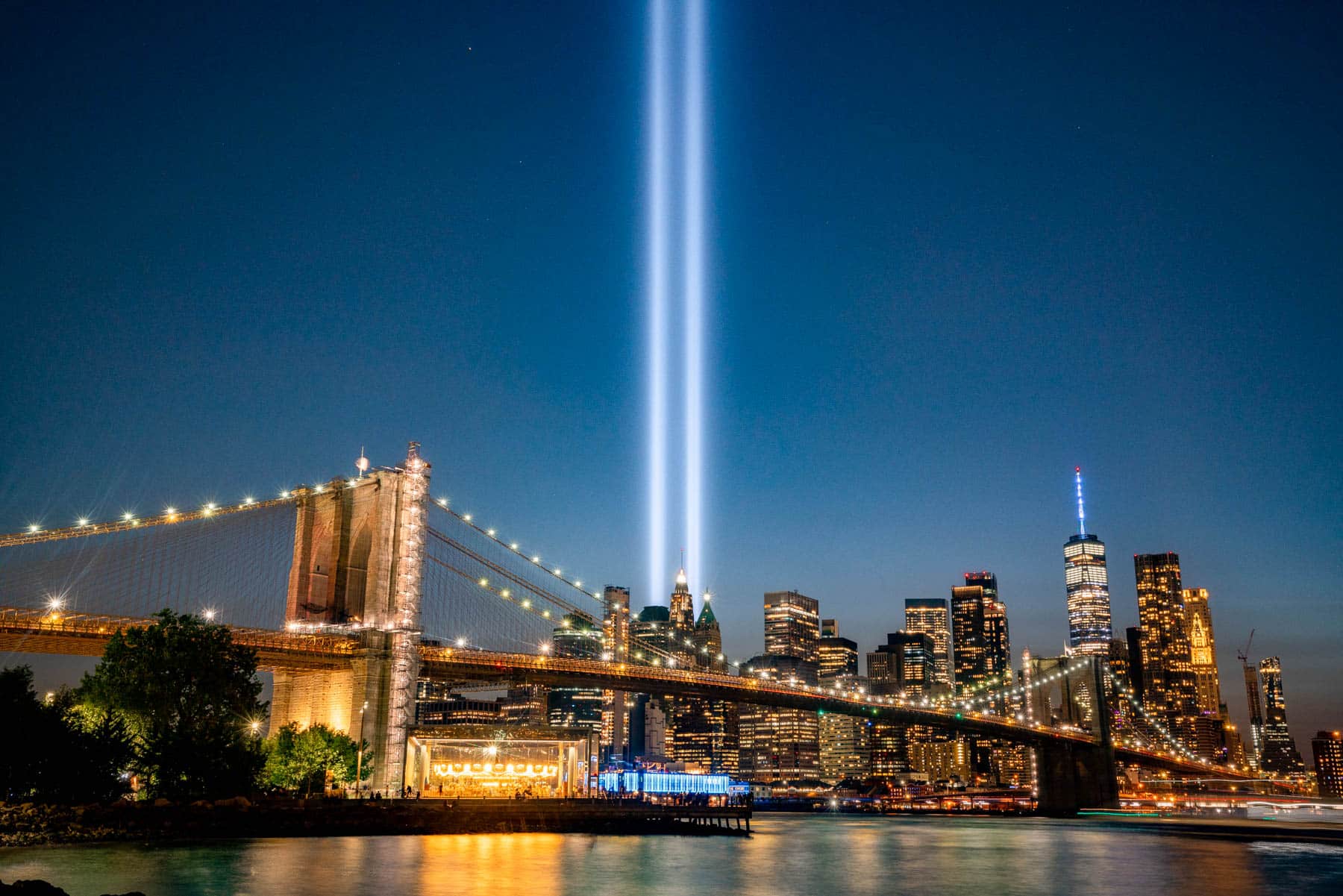
There’s 3 Key Players Responsible for Building the Brooklyn Bridge
John Augustus Roebling: The man with the plan, literally. The idea for the bridge was conceived by John Roebling, a notable engineer best known for pioneering the use of steel wires in suspension bridges.
Washington Augustus Roebling: John’s son. Washington Roebling plays a big (albeit short) role in the construction of the Brooklyn Bridge. I’ll delve into his story further below, but he deserves to be mentioned because he was a prominent figure.
William Tweed: The (con)man with the cash. Tweed’s past was riddled with corruption, bribery and greed but damn — he got stuff done. Roebling relied on Tweed’s ability to bribe council members (to the tune of $2 million in today’s dollars) to fund the project. Spoiler alert: they did.
How Long Did it Take to Build the Brooklyn Bridge?
Construction on the Brooklyn Bridge began in 1869 and wasn’t completed until 1883, which means it took 14 years to build the Brooklyn Bridge.
Interesting Facts About the Brooklyn Bridge
(Table of Contents)
Brooklyn Bridge Facts (Table of Contents)
- A (Short) History of the Brooklyn Bridge
- Interesting Facts About the Brooklyn Bridge
- #1. The Brooklyn Bridge is an engineering marvel
- #2. It wasn’t called the Brooklyn Bridge (at first)
- #3. At least 25 people died building the bridge
- #4. The family that built the bridge was cursed
- #5. Then, a woman saved the day (surprise, surprise)
- #6. Before the Brooklyn Bridge opened to the public, a rooster was involved
- #7. Opening day was a (massive) celebration
- #8. And then cause for (massive) panic
- #9. There used to be a toll for crossing the Brooklyn Bridge
- #10. The bridge is home to the fastest animal in the world
- #11. The Brooklyn Bridge is older than London’s Tower Bridge
- #12. How many people cross the Brooklyn Bridge per day?
- Cool Facts About the Brooklyn Bridge (Post Roundup)
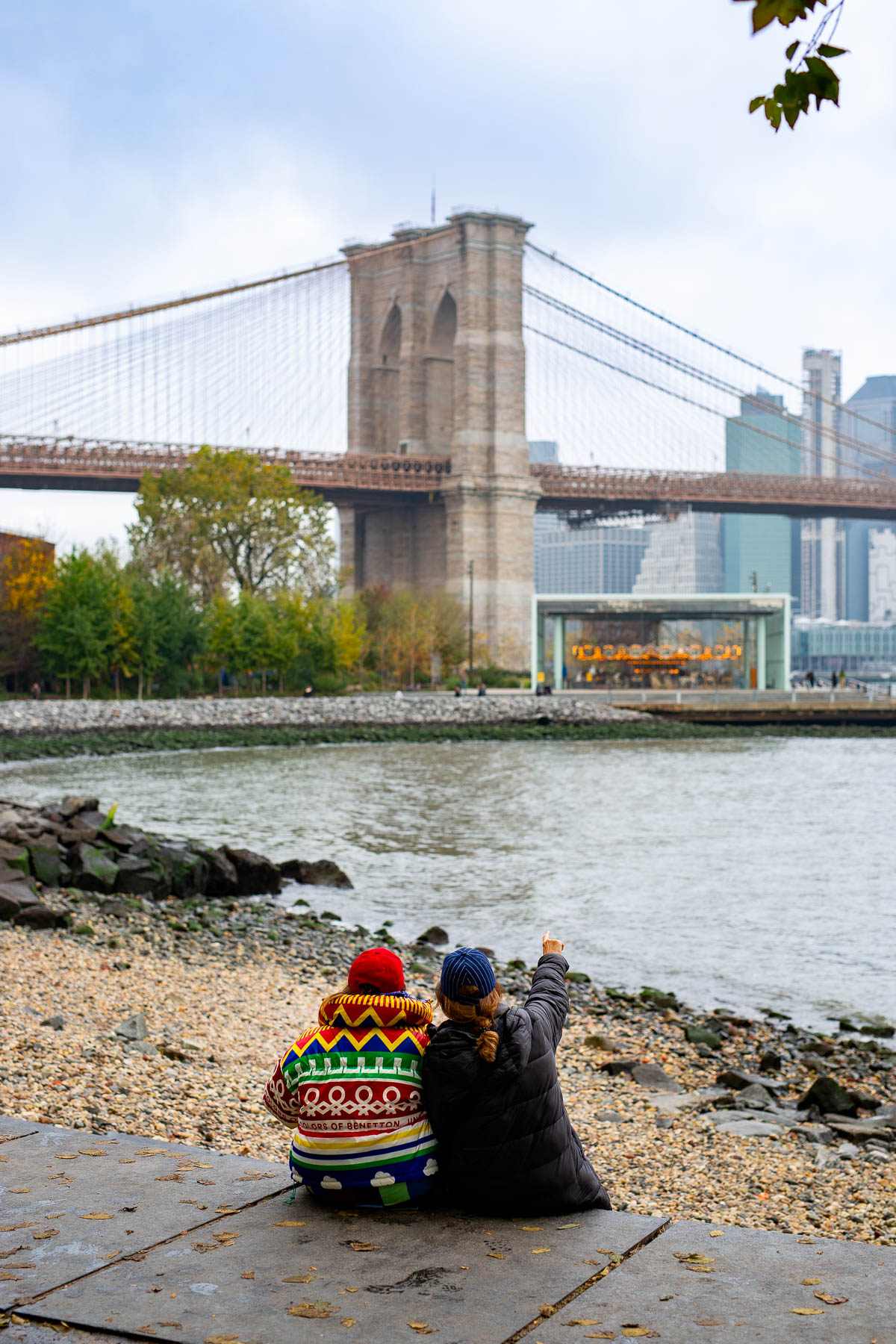
#1. The Brooklyn Bridge is an engineering marvel
When construction was completed on the Brooklyn Bridge in 1883, it was officially deemed the first steel-wire suspension bridge in the world. In other words, this was the first suspension bridge in the world to use steel wiring.
The bridge’s long term success is attributed to the four monolithic suspension cables made from spun heavy wires, a novel engineering design. In fact John Roebling’s mastery of steel wiring put this method on the map.
If that wasn’t impressive enough, allow me to share another interesting fact about the Brooklyn Bridge. The Brooklyn Bridge was deemed the longest suspension bridge in the world when it opened. Spanning an impressive 1,595 feet, it dwarfed every bridge that came before.
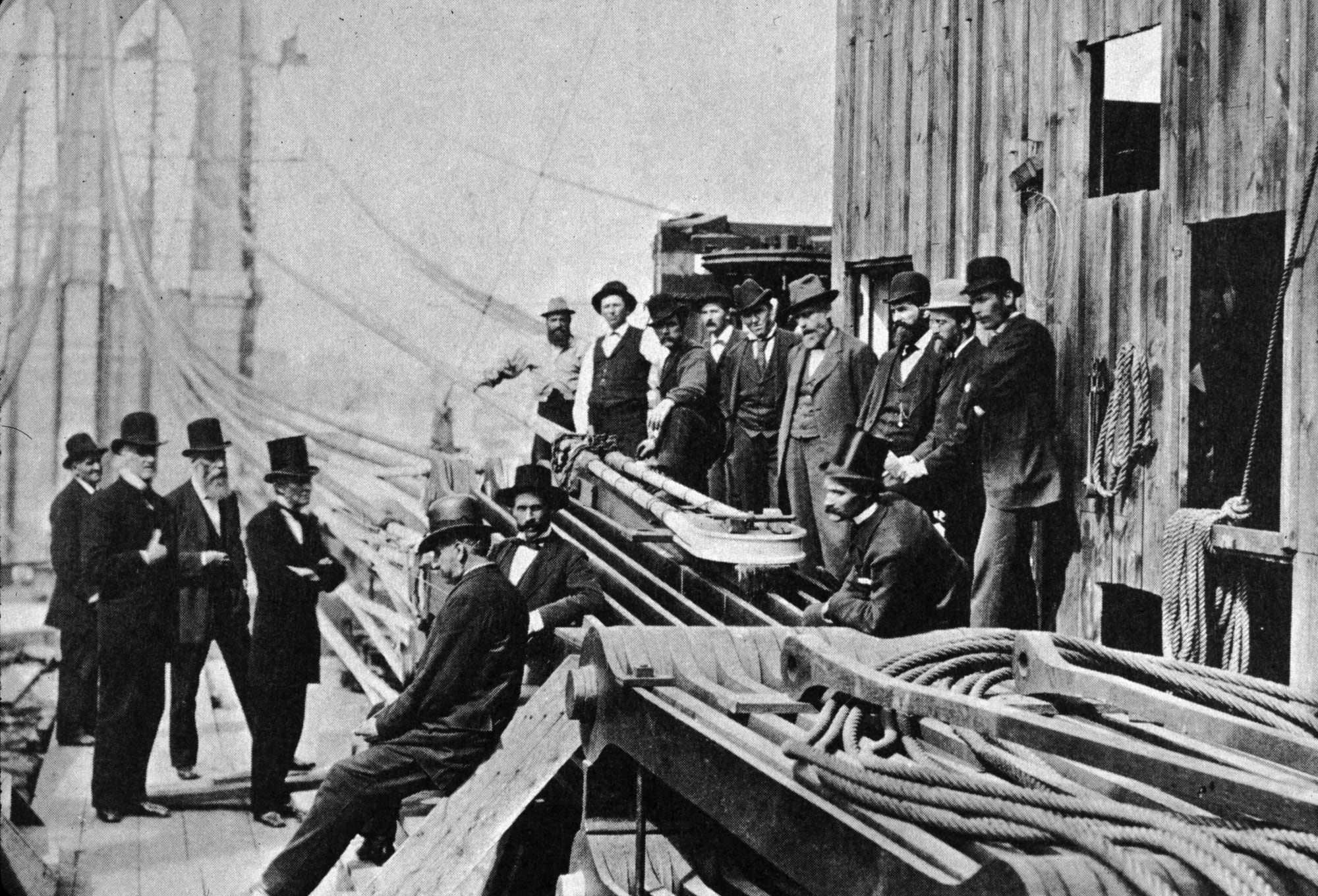
FAQ: How Long is the Brooklyn Bridge?
The Brooklyn Bridge is 1.1 miles long. But getting onto and off of the bridge adds extra distance, all told you can expect to walk 1.6 miles when crossing the Brooklyn Bridge.
Bonus Brooklyn Bridge fact: The Brooklyn Bridge held the title as the longest bridge in the world for twenty years until being beat by its neighbor, the Williamsburg Bridge.
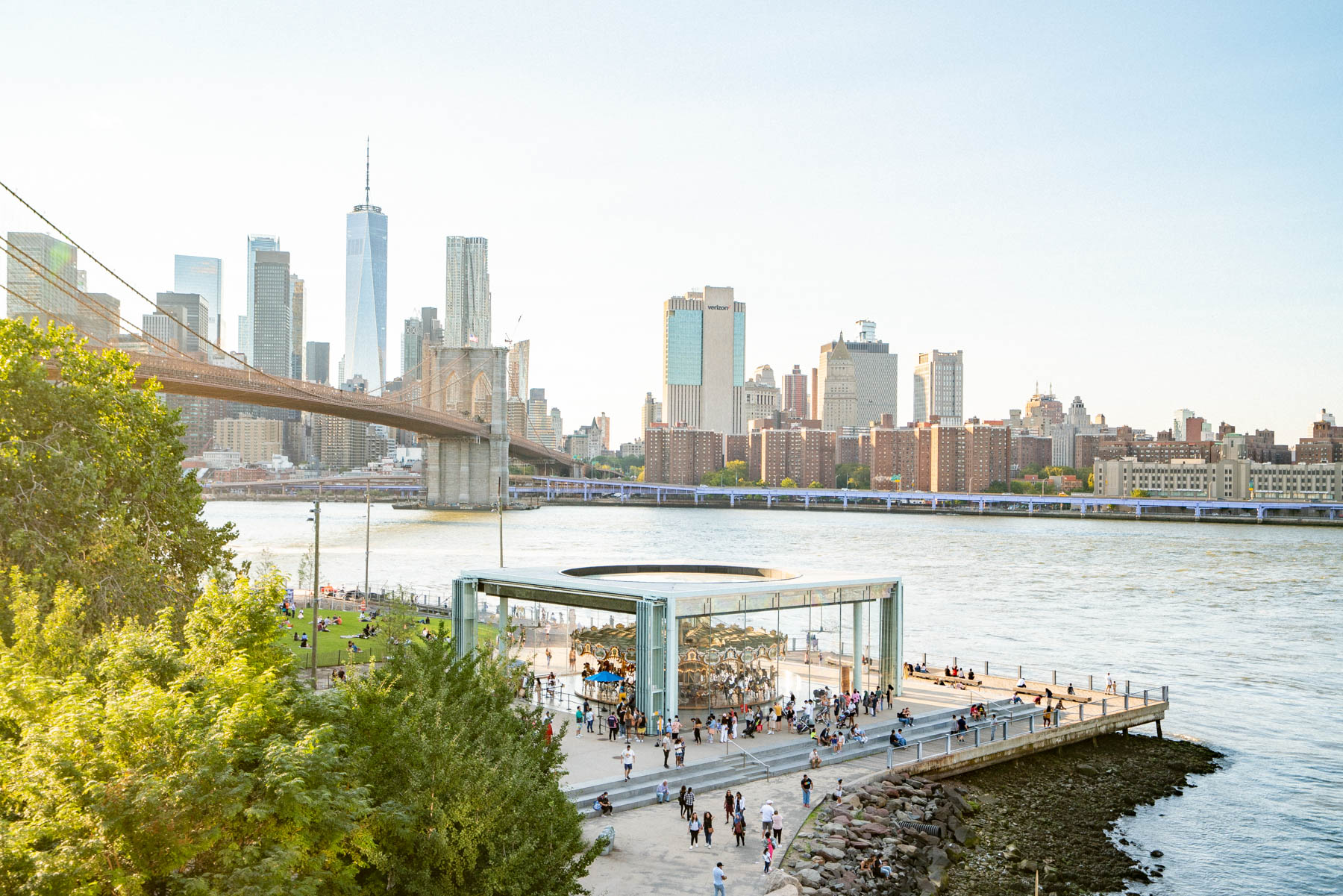
#2. It wasn’t called the Brooklyn Bridge (at first)
During construction, the bridge was known as the Great East River Bridge, but when completed, it was renamed to the New York and Brooklyn Bridge.
But New Yorkers weren’t impressed with the name. So they did what they do best, and they made life easier for everyone by shortening the name to Brooklyn Bridge in 1915 (32 years after it opened).
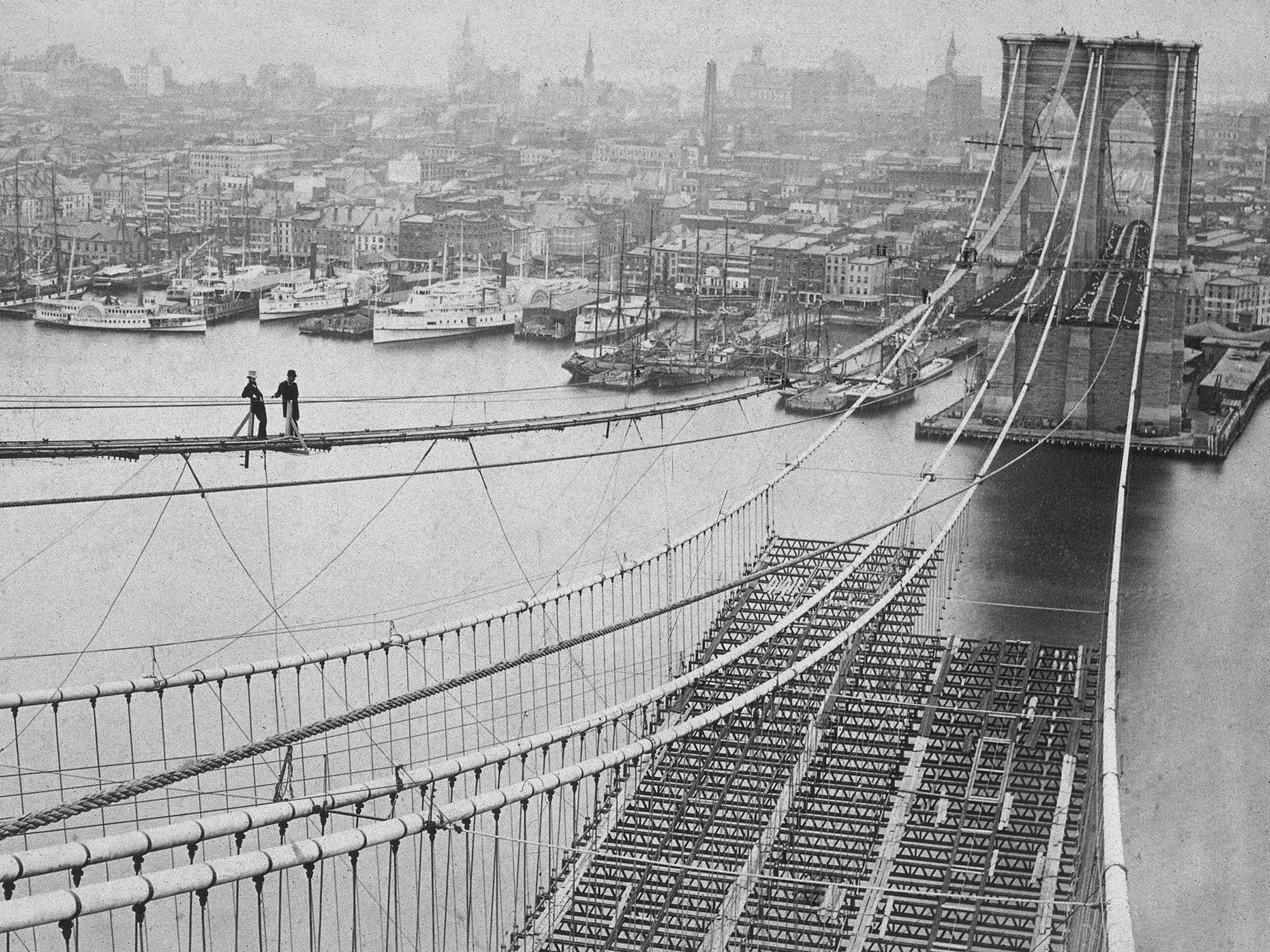
#3. At least 25 people died building the bridge
The first death on the job occurred before construction of the Brooklyn Bridge even began, and it was arguably the most catastrophic death of all because it took the life of the head engineer, John Roebling.
Before breaking ground on the project, Roebling needed survey the area. While surveying a particular dock, an incoming boat collided with the dock and crushed his foot. The damage was so severe that his toes were amputated to avoid further infection. Unfortunately, tetanus set in and John died of lockjaw less than a month later.
Sadly, Roebling wasn’t the only person to die during the construction of the Brooklyn Bridge. At least 25 others died as well. Some workers dies after falling off towers, others from debris and many from caisson disease (more commonly known as “the bends”).
It’s hard to know exactly how many folks died while building the bridge, but many suffered lingering life-long illnesses as a result of working on the project.
#4. The family that built the bridge was cursed
As I mentioned earlier, John Roebling died before construction began so his son, Washington, took over as chief engineer. You can chalk it up to good old-fashioned nepotism, and you (probably) wouldn’t be wrong. But, Washington was the most suitable person to take over because he worked closely with his father on the design of the bridge.
But here’s where things get tricky. Shortly after taking over, Washington sustained a debilitating illness that forced him off the project. To better understand what caused his health condition, it’s important to understand a key detail in bridge engineering (getting technical, aren’t we?).
The towers of the Brooklyn Bridge were built on caissons, which are large wooden boxes sunk to the bottom of the river bed (see photo below). Caissons are filled with compressed air to keep water out while workers dig toward solid bedrock.
From there, the wooden boxes are filled with concrete and serve as the foundation of the bridge.

Working inside the caisson was dangerous because of decompression sickness, better known as the bends. The bends is a debilitating condition that causes nitrogen bubbles to form in the bloodstream when divers come to the surface too quickly.
Washington Roebling often supervised workers in the caisson and developed the bends himself when he resurfaced too quickly in 1870. After the accident, he wasn’t able to visit the worksite anymore (the project was only 1 year in at that point!).
But Washington was a smart man, and smart men make good decisions. Let’s introduce our next key player.
Interested in learning about how the Brooklyn Bridge was constructed? Good on you! Here’s the definitive guide on the Brooklyn Bridge. Seriously, it’s the only resource you’ll ever need.
#5. Then, a woman saved the day (surprise, surprise)
When Washington Roebling found himself bedridden he turned to his wife Emily, who stepped in as de facto chief engineer. Emily was not an engineer by trade but she was intelligent and understood the plans well enough to oversee the day-to-day construction of the Brooklyn Bridge.
History books remember her kindly. She’s referred to as a pioneer due to her tireless dedication and significant contributions to the building of the Brooklyn Bridge. When the bridge was completed, Emily Roebling earned a law degree from New York University and became a advocate for gender equality.
“I thought I would succumb, but I had a strong tower to lean upon, my wife, a women of infinite tact and wisest counsel”.
Washington Roebling when asked about his sickness.
#6. Before the Brooklyn Bridge opened to the public, a rooster was involved
Emily’s significant contribution to the building of the bridge gave her the honor of being the first person to cross it when it was completion.
It’s important to remember that when the Brooklyn Bridge was completed, it was the longest bridge in the world and the first steel-suspension bridge ever built. Imagine the nerves! For comfort, Emily chose to cross the bridge on a horse-drawn carriage while carrying a rooster for good luck.
#7. Opening day was a (massive) celebration
The long-awaited opening of the Brooklyn Bridge drew crowds from all over the state. The President of America, Chester Arthur, attended the ceremony alongside New York Governor (and future president) Grover Cleveland.
A military band played joyous tunes while troops and politicians crossed the bridge. Cannon fire and hour-long fireworks, no expense was spared. After all the charades wrapped up and the bridge officially opened, more than 150,000 people crossed the bridge.
The bridge was a massive success and folks couldn’t get enough of it, until …
#8. And then cause for (massive) panic
This was one of the most interesting Brooklyn Bridge facts I came across during my research. A week after the bridge opened to the public something terrible happened. The cause is unclear, but a mad panic broke out on the bridge and caused a nightmarish stampede.
Approximately 20,000 people were on the bridge when a rumor spread that the bridge was starting to collapse. Naturally, a panic set in and people started bolting towards the stairways. This resulted in a stampede that caused 12 deaths as people were crushed while trying to escape.
#9. There used to be a toll for crossing the Brooklyn Bridge
Here’s a surprising fact about the Brooklyn Bridge many folks don’t know: there was a toll to cross the bridge when it originally opened.
If you were crossing the Brooklyn Bridge on foot you were expected to fork over a penny, if your horse came with then you needed to add 5 cents to the charge. Wagon? That’ll be 10 cents.
If your cattle needed to make it to Manhattan, you’d pay 5 cents, but the sheep and hogs would only cost you 2 cents. Thankfully the toll system didn’t last long (it was revoked in 1891).
#10. The bridge is home to the fastest animal in the world
Peregrine falcons are some of the coolest animals in the world, largely thanks to their mind-boggling speed. These birds can reach speeds exceeding 200 miles per hour!
Unfortunately the species has been dying off due to pesticide poisoning. However, after pesticides were banned in 1972, Peregrine falcons returned to the city and took up residence in tall structures. Today there’s several pairs of falcons that choose to nest on the Brooklyn Bridge.
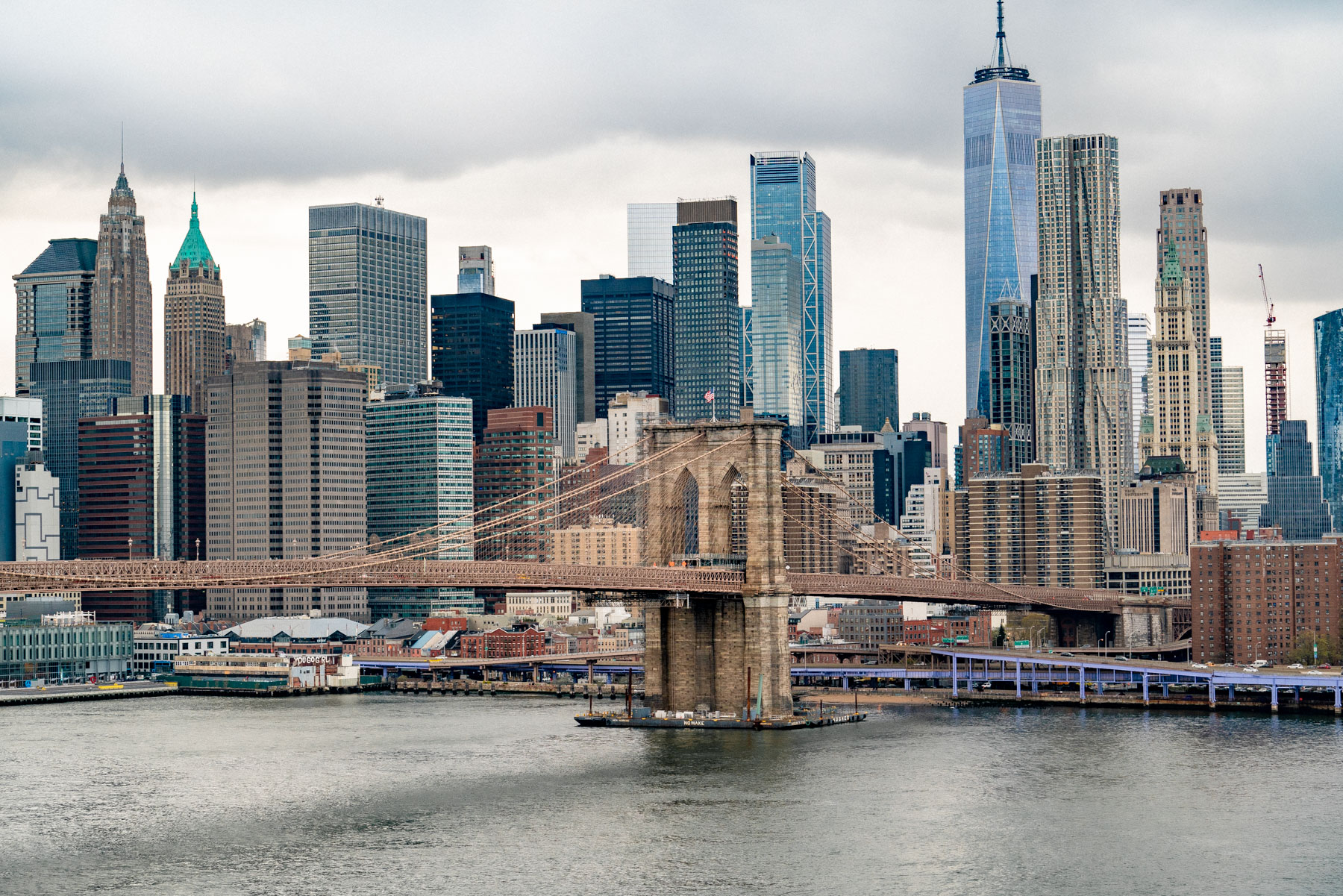
#11. The Brooklyn Bridge is older than London’s Tower Bridge
This is a great Brooklyn Bridge trivia question for anyone looking to impress friends. When asked, most folks assume that London’s famous Tower Bridge is older than NYC’s Brooklyn Bridge but that’s not the case.
For the Brooklyn Bridge, construction began in 1869 and wasn’t completed until 1883. Alternatively, London’s Tower Bridge was built between 1886 and 1894. It opened to the public 11 years after the Brooklyn Bridge.
#12. How many people cross the Brooklyn Bridge per day?
On average more than 116,000 vehicles, 3,000 bikers and 30,000 pedestrians cross the Brooklyn Bridge per day.
Cool Facts About the Brooklyn Bridge (Post Roundup)
In sum, here’s a quick recap of the coolest Brooklyn Bridge facts.
- It took 14 years to build the bridge
- The Brooklyn Bridge was a bridge of many firsts
- It wasn’t called the Brooklyn Bridge (at first)
- At least 25 people died while building the bridge
- The family responsible for the bridge was ill-fated
- Then, a woman stepped in
- The Brooklyn Bridge is older than London’s Tower Bridge
- Before the Brooklyn Bridge opened to the public, a rooster was involved
- Opening Day was cause for (massive) celebration
- There used to be a toll for crossing the Brooklyn Bridge
- Interesting fact about the Brooklyn Bridge: The panic
- The bridge is home to the fastest animal in the world
Related Articles
15 Fascinating Facts About Central Park
15 Best Things to Do in Brooklyn Heights (Local’s Guide)
25 Thought-Provoking Facts About New York City
20 Best Things to Do in DUMBO, Brooklyn (Helpful Guide & Tips)
We hope you found this list of interesting facts about the Brooklyn Bridge informative! Let us know if you’d like to see more posts like this and we’d be happy to make them!
Cheers!
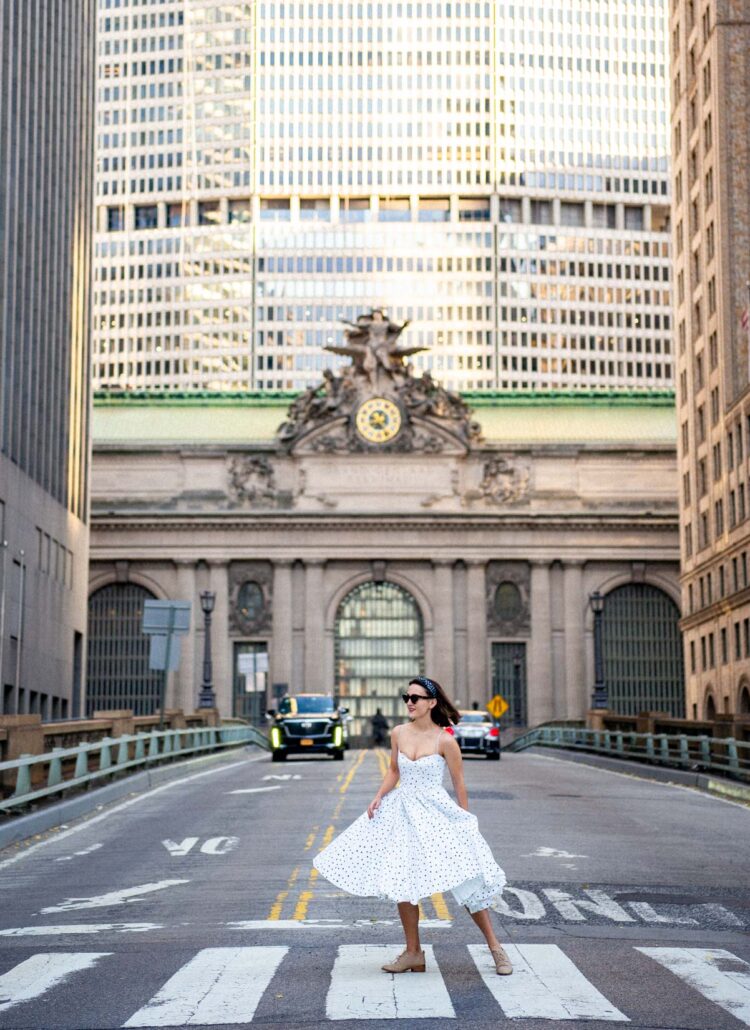

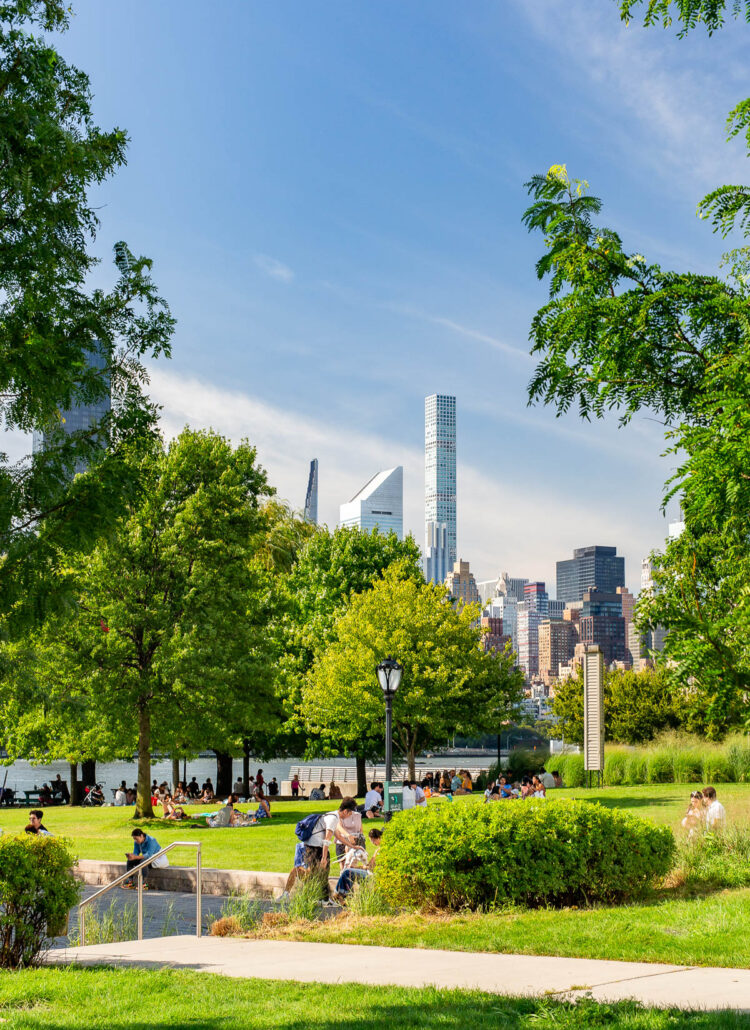

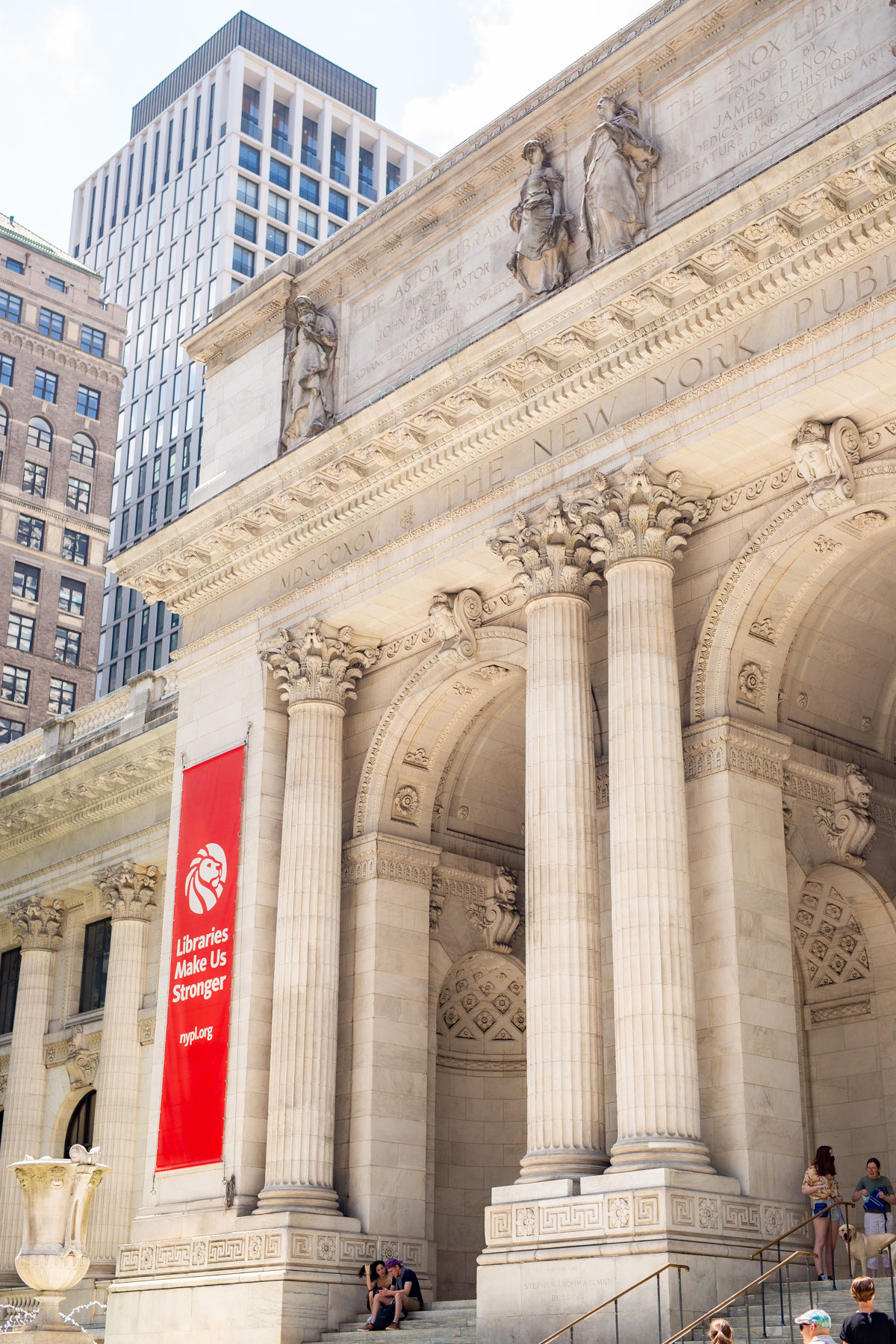
While the Brooklyn Bridge was the first STEEL cable suspension bridge, an almost identical bridge was built by John Roebling many years before in Cincinnati, Ohio – with construction beginning in 1856 and finishing in 1866. The Brooklyn Bridge construction would begin 3 years later in 1869. The John Roebling Suspension bridge in Cincinnati used wrought iron cables from England and was the longest suspension bridge until the Brooklyn Bridge opened, spanning almost 600 more feet than it’s Cincinnati prototype. Many people are unaware that this Brooklyn Bridge twin still exists in Cincinnati providing access to both cars and pedestrians from Cincinnati to Kentucky. The two bridges are quite remarkably similar.
Krista, you are spot on! Have you seen the documentary by Ken Burns? I recently watched it and know exactly the bridge you’re talking about. It was so interesting to see the first bridge Roebling built in Ohio. Thanks for sharing this deeper look at interesting Brooklyn Bridge facts, I bet a ton of readers will find it so helpful! Cheers and thank you again!
Just bought a beautiful picture of the brooklyn bridge and found these facts very interesting! Thank God for these amazing people that made it possible. Thank you!
Hi Paulette, so glad to hear the facts were useful for you! The Brooklyn Bridge is an amazing architectural marvel!
ThAnk you for your exciting method of telling a historical event! I was fun! I was born on Mulberry Street in 1932 and when I was 10 I walked across the Brooklyn Bridge! At the time, it was an adventure to do so! Considering to never saw a real tree till I was 5 years old entering Kindergarten!It was due to my oldest sister in high School learning about the Brooklyn Bridge that she took us by bus ( actually 3 different buses to get there and it was the most wonderful experience I ever had at that time, since then, I conquered the world! As I’m known all over East Asia as. “The One and Only”, again thank you from a 91 year old man!!
Hey Sal, what an interesting story! Sounds like the Brooklyn Bridge is a very sentimental icon for you, what pleasant memories you have! Thanks for sharing them with us. 🙂